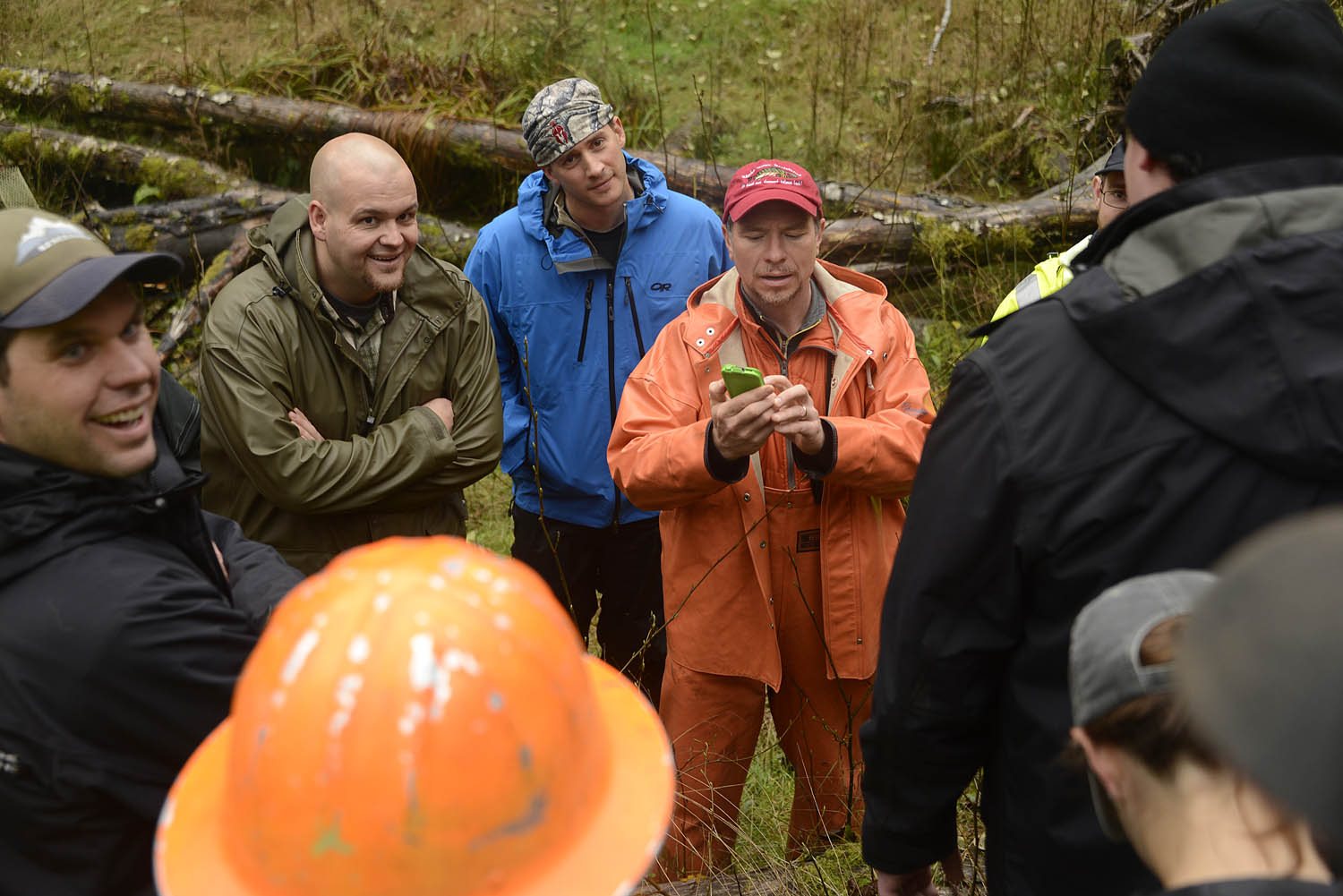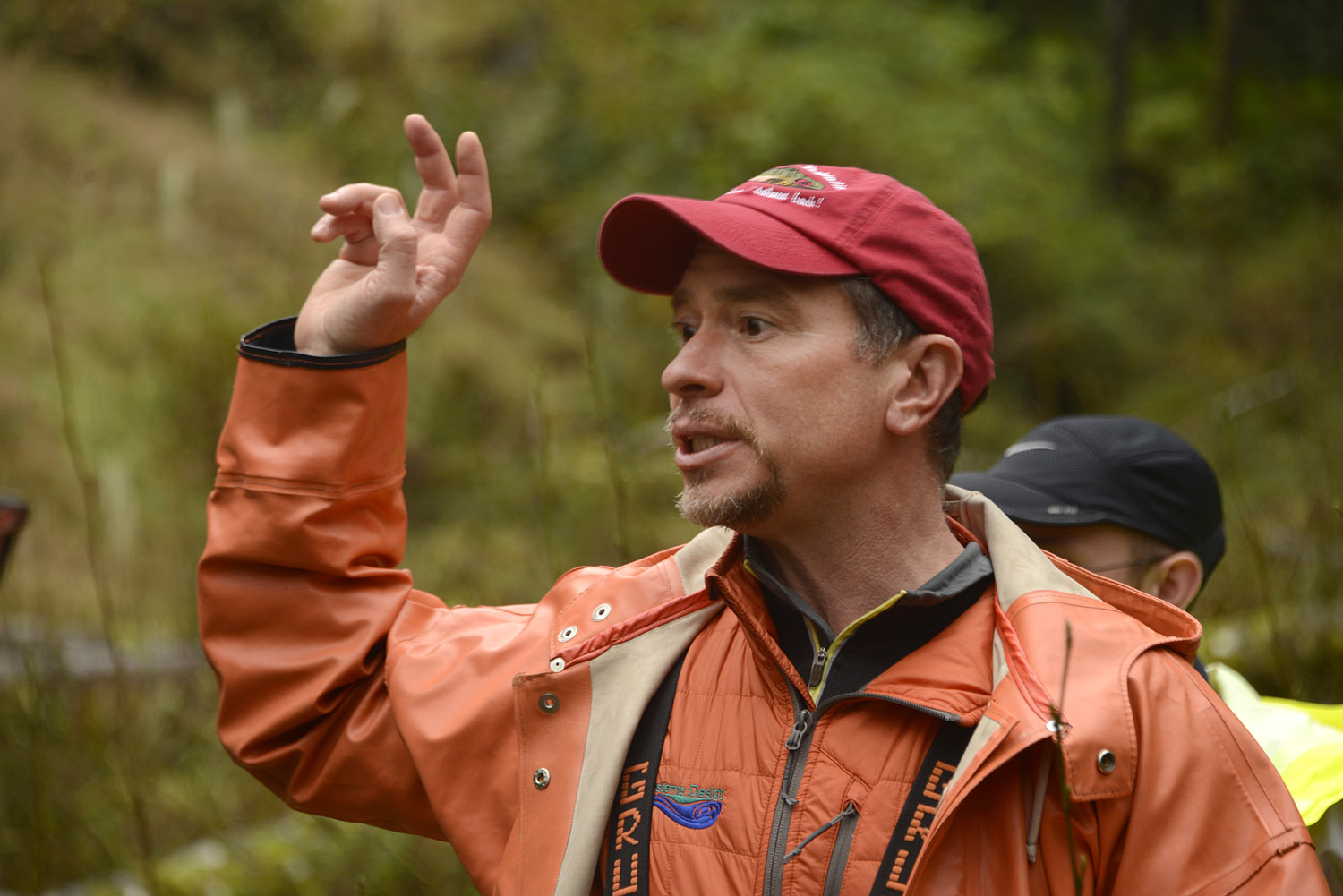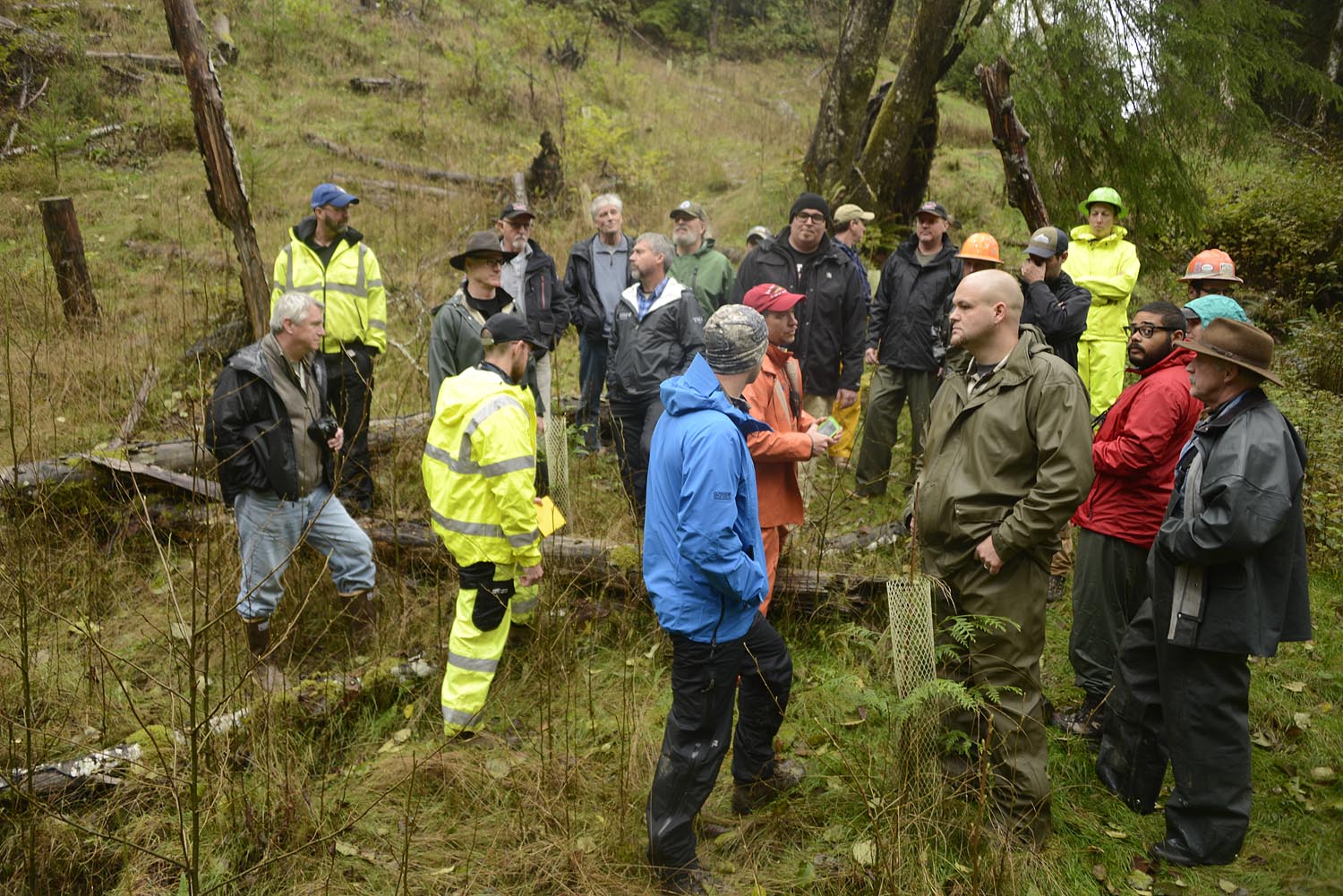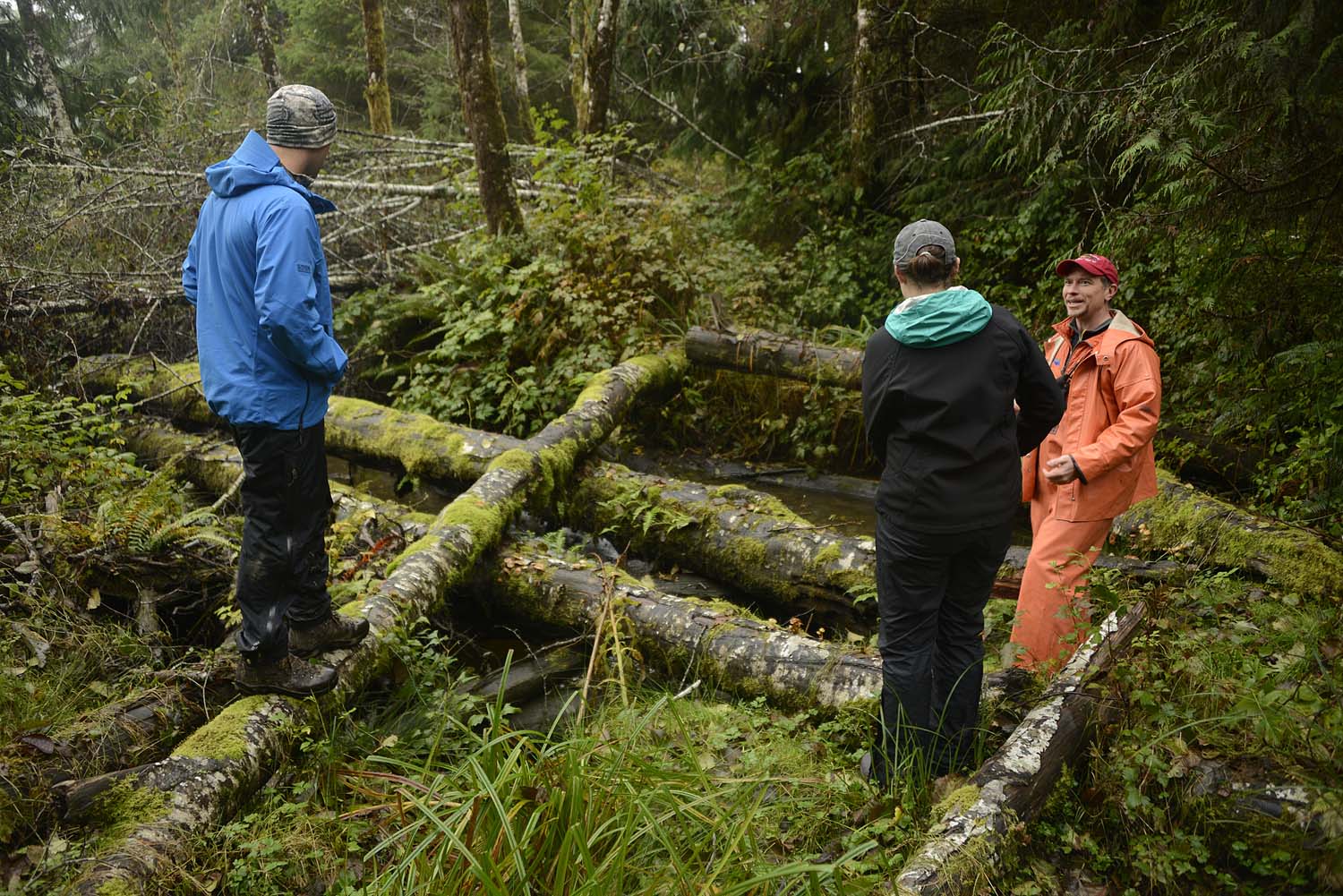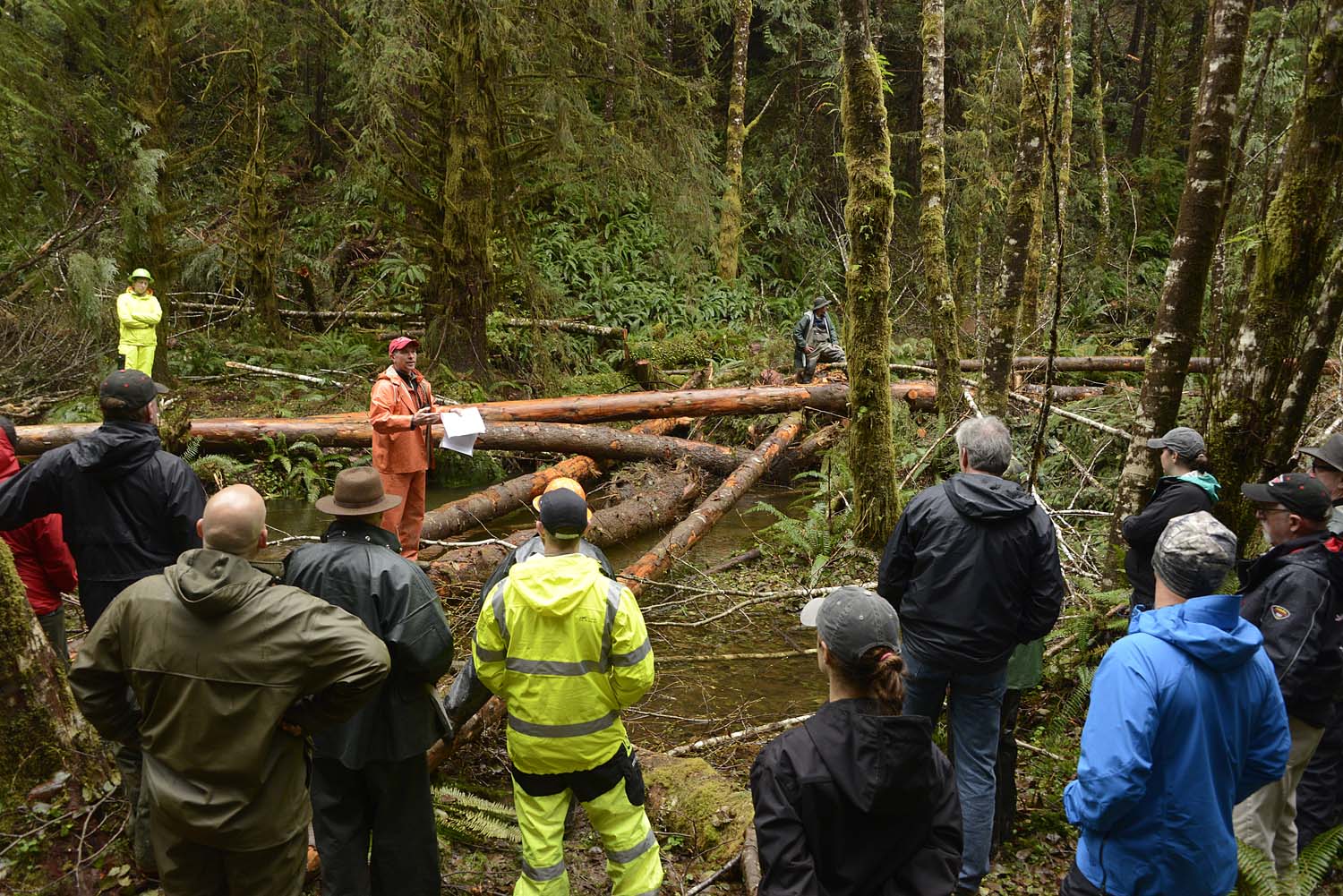Written by David Ryan, Field Forester
Photographed by Larry Workman, Quinault Indian Nation
We are standing in a creek bottom with water around our feet. It’s raining. It’s cool, but not too uncomfortable. As the old saying goes: “There’s no such thing as bad weather; just bad clothing.” I am fortunate that my guests seem to understand that. My guests are several members of the Quinault Nation and the Bureau of Indian Affairs.
They are here to look at the work we are doing at Ellsworth Creek Preserve. This year we have decommissioned roads, upgraded roads, implemented a forest restoration thinning, and worked on an in-stream restoration … among other things.
As a field forester for The Nature Conservancy one of my duties is to participate in meetings, tours, and workshops pertaining to forestry and ecology. I thoroughly enjoy when those events are held at Ellsworth Creek. I love meeting people who are interested enough to visit and look at the forest and I always learn every time guests arrive.
As a temperate, coastal rainforest Ellsworth can be a challenging place to visit. It is steep. It is brushy. It is wet. Those logistical challenges increase when coupled with management activities on the landscape. Again, I am fortunate that my current guests understand that as well. They are game for inclement weather, rough ground to walk over, and heavy machinery to coordinate around.
The rewards are rich. We visit log jams installed this summer that are already re-engaging historic floodplains and channels. We look at forest stands that were recently managed, historically managed, and others that will not see human management again. We checked roads that no longer exist due to our work. And most importantly, we talk. We discuss. We question. We answer… or we don’t. We think critically. We don’t always agree. One course of action here may or may not work for other land managers elsewhere. But the discourse is always respectful. And we all seem to enjoy the conversation.
We have now spent many hours walking, talking, and wending our way through the rain and the woods; certainly a physically uncomfortable day for many people. Eventually a discussion arises of whether people want to continue downstream to look at some bigger log jams and another forest stand treatment or go back and get warm and dry. I hear a colleague call out for “a coalition of the willing to venture further downstream” to continue the discussion.
Almost everyone walks downstream. The conversation continues. I am grateful when people take the effort to really look at our work. I am grateful for my guests. And this place.




